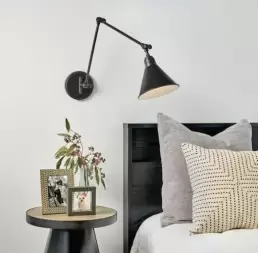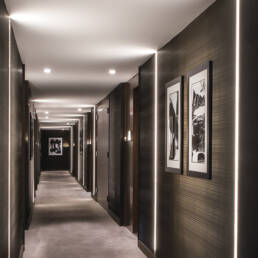A Comprehensive Guide to Ambient, Task, Accent, and Decorative Lighting Strategies
Lighting is an integral aspect of interior design, influencing the mood, functionality, and aesthetic appeal of your home. By strategically incorporating ambient, task, accent, and decorative lighting, you can create a harmonious and visually pleasing environment. This comprehensive guide explores each lighting type, offering insights into their unique characteristics and optimal applications to transform your living spaces.
Ambient Lighting
Ambient lighting, also known as general lighting, establishes the overall illumination of a room. It serves as the foundation for a well-lit space, providing a comfortable and inviting atmosphere.
- Ceiling-Mounted Fixtures:
Ceiling-mounted fixtures, such as chandeliers, pendant lights, and recessed lighting, are popular choices for ambient lighting. The key is to consider the scale of the fixture in relation to the room size and ceiling height. For larger spaces, a grand chandelier or a series of pendant lights can create a dramatic focal point, while recessed lighting offers a subtle and modern alternative.
- Wall-Mounted Fixtures:
Wall-mounted fixtures, including sconces and wall lamps, contribute to ambient lighting while adding a decorative touch. Strategically placed sconces can enhance the perception of space, and dimmer switches allow you to adjust the intensity for various occasions. Consider the placement of these fixtures to achieve balanced illumination throughout the room.
- Indirect Lighting:
Indirect lighting, such as cove lighting and LED strips hidden behind architectural elements, creates a soft and diffused glow. This type of ambient lighting is ideal for spaces where a uniform and inviting atmosphere is desired. Cove lighting can be installed in recesses or ledges, providing a gentle illumination that complements other light sources.
- Considerations for Ambient Lighting:
– Dimmer Controls: Install dimmer switches for ambient lighting fixtures to adjust the brightness according to different activities and moods.
– Layered Lighting: Combine different types of ambient lighting to create a layered effect. This can involve a mix of ceiling fixtures, wall-mounted sconces, and indirect lighting for a well-balanced ambiance.
– Color Temperature: Choose light bulbs with a color temperature that complements the room’s color scheme and purpose. Warmer tones are often preferred for living areas, while cooler tones may suit workspaces.
Leeds by Russell Lighting

Task Lighting
Task lighting is designed to provide focused illumination for specific activities, enhancing functionality and reducing eye strain. It plays a crucial role in areas where activities such as reading, cooking, or working take place.
- Desk Lamps:
Desk lamps are essential for workspaces, home offices, and study areas. Opt for adjustable desk lamps that allow you to direct the light precisely where it’s needed. Consider the style and size of the lamp to ensure it complements the overall design of the space.
- Under-Cabinet Lighting:
In the kitchen, under-cabinet lighting illuminates countertops, making food preparation safer and more efficient. LED strips are a popular choice for under-cabinet lighting, providing a bright and energy-efficient solution. This task lighting enhances visibility while cooking or performing kitchen tasks.
- Task Lighting in Bathrooms:
Proper lighting in the bathroom is essential for grooming activities. Install wall-mounted fixtures on either side of the bathroom mirror to eliminate shadows on the face, providing optimal lighting for tasks such as shaving or applying makeup. Vanity lights with adjustable features are ideal for achieving the right balance.
- Reading Nooks:
Create cozy reading nooks with dedicated task lighting. Floor lamps with adjustable arms or swing-arm wall lamps are excellent choices for these spaces. The goal is to provide ample illumination for reading while maintaining a comfortable and inviting atmosphere.
- Considerations for Task Lighting:
– Task-Specific Placement: Position task lighting fixtures to minimize glare and shadows on the task at hand. For example, place desk lamps to the side of your work area to reduce shadows on the paper or computer screen.
-Adjustability: Opt for adjustable task lighting fixtures that allow you to control the direction and intensity of the light. This flexibility ensures that the lighting meets the specific needs of different activities.
– Task Lighting Layers: Combine various task lighting sources to create layers of illumination in multifunctional spaces. This approach provides versatility and allows you to tailor the lighting to different tasks.

Accent Lighting
Accent lighting is all about creating visual interest and drawing attention to specific elements within a room. It adds depth, drama, and a touch of sophistication to your home decor.
- Spotlights and Uplighting:
Use adjustable spotlights to highlight artwork, sculptures, or architectural features. Uplighting, which involves directing light upward, creates a sense of drama by casting shadows and emphasizing vertical elements. Consider the positioning and angle of the spotlights to achieve the desired effect.
- Display Lighting:
Showcase shelves, cabinets, and display units with integrated lighting. LED strips or puck lights can be discreetly installed to accentuate collectibles, art pieces, or decorative items. This type of accent lighting not only enhances the aesthetics of the room but also adds a layer of sophistication.
- Wall Grazing:
Wall grazing involves placing fixtures close to a textured wall to emphasize its surface. This technique adds depth and drama, especially in spaces with interesting wall finishes such as stone or textured wallpaper. Experiment with the placement of fixtures to achieve the desired effect.
- Backlighting:
Create a captivating ambiance by placing light sources behind translucent materials, such as onyx panels or glass. This backlighting technique produces a soft and ethereal glow, adding a touch of luxury to your home. Consider using backlighting in areas where you want to create a visually stunning backdrop, such as behind a headboard or a built-in shelving unit.
- Considerations for Accent Lighting:
– Highlight Focal Points: Use accent lighting to draw attention to architectural details, artwork, or focal points in a room. This technique adds visual interest and emphasizes the unique features of your home.
– Adjustable Fixtures: Opt for adjustable accent lighting fixtures to control the direction and focus of the light. This flexibility allows you to adapt the lighting to changes in decor or to highlight different elements over time.
– Color Temperature for Drama: Experiment with warm and cool color temperatures to create a dramatic effect. Warm tones can evoke a cozy and inviting atmosphere, while cooler tones add a modern and sophisticated touch.

Reccessed Lighting by DawnRay
Decorative Lighting
Decorative lighting serves both functional and aesthetic purposes, acting as a statement piece that enhances the overall design of a room. These fixtures not only provide light but also contribute to the visual appeal of your home.
- Chandeliers:
Chandeliers are iconic decorative lighting fixtures that can serve as a focal point in various areas of your home, from the entryway to the dining room. Choose a chandelier that complements the style of your space, whether it’s a classic crystal chandelier, a modern geometric design, or a rustic farmhouse-inspired fixture.
- Pendant Lights:
Pendant lights are versatile decorative elements that can be used individually or in clusters. Install pendant lights above kitchen islands, dining tables, or in hallways to add a touch of style and personality. Consider the height and spacing of pendant lights to achieve a balanced and cohesive look.
- Statement Floor Lamps:
Floor lamps with unique designs or artistic elements can serve as both functional lighting and decorative accents. Place statement floor lamps in living rooms, bedrooms, or reading nooks to elevate the overall design aesthetic. Consider the scale of the lamp in relation to the room’s size and decor.
- Artistic Wall Sconces:
Explore wall sconces with artistic or sculptural designs to enhance the visual appeal of your walls. These decorative fixtures can act as standalone pieces of art while providing ambient or accent lighting. Install them in hallways, entryways, or as bedside lighting for a stylish touch.
- Considerations for Decorative Lighting:
– Scale and Proportion: Pay attention to the scale and proportion of decorative lighting fixtures in relation to the room. A large chandelier may be suitable for a spacious dining room, while smaller pendant lights could work well in a cozy breakfast nook.
– Complementary Styles: Ensure that decorative lighting fixtures complement the overall style of your home. Whether your decor is contemporary, traditional, or eclectic, choose fixtures that harmonize with the existing design elements.
– Artistic Elements: Consider decorative lighting as an opportunity to incorporate artistic elements into your home. Look for fixtures that showcase unique shapes, materials, or artistic craftsmanship to make a statement.
In conclusion, creating a well-lit and visually stunning home involves a thoughtful combination of ambient, task, accent, and decorative lighting. Each type of lighting serves a specific purpose, contributing to the overall functionality and aesthetics of your living spaces. By understanding the unique characteristics of each lighting type and strategically incorporating them into your home design, you can achieve a harmonious and inviting atmosphere that reflects your personal style. Whether you’re highlighting architectural features, creating cozy reading nooks, or making a bold statement with decorative fixtures, lighting plays a crucial role in shaping the ambiance of your home. Experiment with different lighting strategies, embrace creativity, and let your home shine in its best light.

Jeffrey Alan Marks
About Sundial Lighting
Sundial Lighting is a leading supplier of light fixtures in the Okanagan Valley. We supply lighting fixtures to residential and commercial builders in Revelstoke, Salmon Arm, Enderby, Armstrong, Vernon, Lake Country, Kelowna, West Kelowna, Summerland, Peachland, Penticton, Oliver, Osoyoos and Keremeos. We have been a major regional lighting store since 1975 and have two Lighting showrooms in Vernon and Penticton. Our experience in the residential and commercial lighting industry is led by our Lighting Consultants who are experts at finding the right lighting fixtures for your budget.
If you are renovating your home or looking for new lighting fixtures to brighten up an existing room visit one of our showrooms or give us a call to book an appointment. You won’t be disappointed in the selection you find and our knowledgeable staff can help you find the perfect CSA approved light for your needs.
If you are in the Trades and would like to open a commercial account at Sundial Lighting please contact us or call to set up an account. We offer a comprehensive Lighting Service for builders and electricians and work closely to align with construction schedules and budgets.

